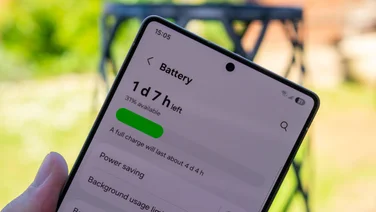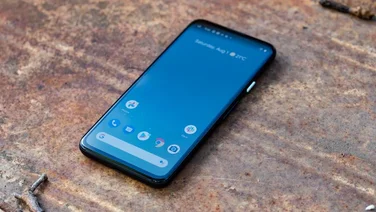To help us provide you with free impartial advice, we may earn a commission if you buy through links on our site. Learn more
- READ NEXT: The best iPhone and Android phone deals
- Apple iPhone X review: What do you need to know
- Apple iPhone X review: Price and competition
- Best iPhone X contract and SIM-free deals
- Apple iPhone X review: Design
- Apple iPhone X review: Face ID
- iPhone X review: Performance and display quality
- iPhone X review: Camera
- iPhone X review: Verdict























- Edge-to-edge display
- Face ID is brilliant
- Superb camera and screen
- Too expensive
The iPhone X is one of the most controversial, talked-about smartphones in years and, for once, it isnt because its simply the latest Apple handset.
Its because it heralds a number of firsts: its the first time Apple has used OLED technology in one of its smartphone screens; its the first time it has removed the home button; and its the first time the firm has used facial recognition as a means of authentication.
Perhaps most controversially, though, the iPhone X represents the very first time Apple has hit the £1,000 mark for a base-model iPhone. The question is, whos going to spend this much money on a phone?

READ NEXT: The best iPhone and Android phone deals
Apple iPhone X review: What do you need to know
That’s very much a question at the end of this review. For now, however, I’m going to concentrate on the phones key features. And it’s the screen that makes the iPhone X so special. As I already mentioned, its the first time Apple has employed OLED technology, but its also the first iPhone to remove the big bezels from above and below the screen.
Inside is Apples A11 Bionic processor, which weve already seen in the iPhone 8 and iPhone 8 Plus, a choice of 64GB or 128GB of storage and dual cameras on the rear of the phone, too.
Apple iPhone X review: Price and competition
As discussed previously, this is the first base model iPhone that has cost more than £1,000. Thats for the 64GB version; the 256GB version costs £1,149 (ouch!). That’s an awful lot of money by anyone’s standards as much as a decent ultraportable laptop and there are no other phones that come close in price currently on the market (save the slightly crazy Huawei Mate 10 Pro Porsche Design edition).The phone that comes the nearest is the Samsung Galaxy Note 8, but even that is £360 less expensive than the iPhone X at around £639 and it comes with a pressure-sensitive stylus. Perhaps the iPhone Xs strongest competition, however, is that which comes from within. The iPhone 8 Plus, although old-fashioned and terribly bulky for a 5.5in phone, is still brilliant and starts at £759. The only practical thing it lacks compared with the iPhone X is Face ID.
Alas, the iPhone Xs spiritual competitor is the Samsung Galaxy S8, which has a near identical screen size and set of features. I say alas, because you can buy a Samsung Galaxy S8 today for the tidy sum of around £475 thats over half the price.

Best iPhone X contract and SIM-free deals
Apple iPhone X review: Design
The iPhone X is available in two colours: white, with a chrome silver trim, and black, with a shiny dark grey trim. Neither, to my eyes, look as good as a £1,000 smartphone ought to. Next to the mocha brown Mate 10 Pro Ive been using for the past couple of weeks, its positively dour. The trim on my white review model starts picking up greasy fingerprints the moment I pick it up, quickly losing its box-fresh lustre, as does the rather plain white rear.
Theres no surprise about the positioning of the phones various physical elements. Aside from the lack of home button and the power button, which has moved around to the right edge, theyre all in the places youd expect. Other things from previous generations also remain in place, with dust and waterproofing to the IP67 standard and no 3.5mm headphone jack. Im still of the opinion, incidentally, that removing it was a misstep.

Likewise, Im not convinced by the camera module on the rear. Its large, unsightly and juts out around a millimetre. This completely unbalances the phone when its placed on a flat surface, so the phone rattles whenever you swipe or tap. The infamous notch on the front, which so many have scoffed at, doesnt bother me at all. Quite the opposite, in fact: I feel it lends the phone character an identifiable X factor if you like that makes it look different to most other current flagships. Lord knows it needs something to help it stand out.
The positives are the same as they are with every other 18:9 aspect ratio, low-bezel phone Ive used: it a high screen-to-body ratio, which essentially means more screen real-estate for a smaller size of phone. So, while it might have a larger 5.8in screen than anything weve seen on an iPhone before, its considerably smaller and lighter than the 5.5in design Apple has been using for the past three years. And those trademark rounded corners and edges mean the iPhone X is just as comfortable to hold and slide into a tight pocket.

Apple iPhone X review: Face ID
The big consequence of filling almost the entire front of the iPhone X with screen is that theres no longer any room for a home button on the front nor, surprisingly, a fingerprint reader. Instead, Apple is moving to a new biometric approach, with Face ID the primary means of unlocking the phone and using Apple Pay.
Face ID works by using the phones True Depth camera to project infrared dots onto your face 30,000 of them, in fact and producing a 3D model of your face that it stores internally alongside a two-dimensional infrared image. It then uses the same sensor to scan your face, match it against the stored model and unlock your phone in a fraction of a second.
Apple claims the likelihood of someone who isnt you unlocking your phone using the new system is one in a million, making it more secure than Touch ID but what is it like to use?
Ive been testing it out for a few days now and Im rather impressed by the system as a whole. Setting it up is as simple as enrolling a fingerprint on an iPhone 8 Plus. Just line up your face in the provided circular loupe and move it around so the sensor can build up a full model of the planes and contours of your mug. Do this a couple of times and youre ready to rock and roll.

Unlocking with Face ID works pretty much perfectly, both for those with glasses and without. Ive yet to have a failure, in fact, and you dont have to look straight at the phone either. Even with the phone placed to the left side of my keyboard I only have to press the side button or double tap the screen and itll see my face and unlock.
I do have a couple of small complaints. First, unlocking for use at contactless payment terminals isnt quite as convenient as before. Now, youre forced to double tap the side button and then raise the phone so it can get a good look at you before tapping on the reader. Before, all you needed to do was double tap the home button and leave your thumb there so the phone could recognise your fingerprint.
Second, Im still coming to terms with the fact that, even after Face ID has used my face to unlock the iPhone X, I still have to swipe up to get to the home screen. Three steps where you used to be able to simply press and hold. Something needs to be done.
Still, at least Face ID works more reliably and is a touch more flexible than Samsungs iris recognition tech, which doesnt work at all if youre wearing glasses. And its good to know that Apple provides protection against accidental unlocking while youre sleeping for instance by implementing a system Apple calls Attention-Aware, which checks that youre awake and alert before unlocking the phone.

Delve into the settings, and youll also find that the same system can be used to prevent the phone dimming the display or lowering the volume of alerts if it detects your face is in the vicinity and your eyes are open.
Of course, you can also use the Face ID camera to track your facial movements and map them onto an Animoji as well, and this is great fun. What isnt quite so fun is the repositioning of the Control Centre. Yes, in addition to removing the home button, the action for calling up the place where you can quickly update settings such as screen brightness, flight mode and volume has moved: you now have to drag your thumb down from the top right corner. I dont like it.
At least getting to the recent apps view is a little more intuitive: just drag your thumb up from the bottom edge of the screen and hold it still for a short while and up pops a sideways-scrolling view of what youve launched recently, complete with iPhone X- style curved corners.

iPhone X review: Performance and display quality
Performance, as always seems to be the case with current generation iPhones, is superlative. The new Apple A11 Bionic chip is inside, coupled with 3GB of RAM, and it produces very similar benchmark results to the iPhone 8 Plus. So its basically faster than any other phone on the market in terms of its CPU and graphics processing grunt.
In really demanding games Id expect the iPhone 8 Plus and iPhone 8 to marginally outperform it, but by and large the 60Hz refresh rate of the iPhone Xs edge-to-edge screen limits frame rates across the range.
As for that display, which dont forget is Apples first OLED effort, well its truly excellent. It has a resolution of 2,046 x 1,125, which delivers a pixel density of 458ppi and its the best iPhone display ever made.
Unlike the Pixel 2 XL, there are no problems with viewing and odd-looking colours. Contrast, as youd expect from an OLED display, is essentially perfect, and colour accuracy is absolutely spot on.
As with all current generation iPhones, the screen has adaptive colour profiling, so in the browser, where most graphics and professionally produced photographic material is targeted at the sRGB colour space, it tweaks onscreen colours to match. During video playback, meanwhile, the phone will automatically switch profiles to the wider DCI-P3 colour space.
Here, I measured the average colour difference (delta E) in the browser at 1.04 across all our tests. Thats astonishing accuracy in a phone, especially one with an OLED display.
Whats more is its bright, peaking at 501cd/m2 with the screen filled with white and supports both HDR10 and Dolby Vision as well as Apples ambient light-matching tech, True Tone. This is one superb display, make no mistake, and its at least as good as the screens adorning Samsungs trio of S8, S8 Plus and Note 8 offerings.

Finally, to battery life. Now, I must stress that at this stage it’s a little too early to say whether or not the iPhone X’s stamina is good or not. I simply haven’t had the chance to use it enough to gauge real-world use accurately so far. What I can say, though, that its performance in our video playback benchmark wasn’t all that impressive. It lasted a mere 9hrs 22mins, in fact, falling well short of the 13hrs 54mins mark set by the iPhone 8 Plus.
iPhone X review: Camera
The camera is great, though, and for all the same good reasons as the iPhone 8 Plus. It isnt the quite best phone camera on the market, but it does a mighty fine job of taking reliable photos and crisp, steady 4K 60fps video.
As with the iPhone 8 Plus, the X has two cameras on the rear, both 12 megapixels, both using Sony sensors. One is a wide angle camera, the other a telephoto. The key difference between this and the iPhone 8 Plus is that the telephoto camera has a slightly brighter aperture at f/2.4. Its optically stabilised, too, just like the main f/1.8 camera.

In theory, this means telephoto shots in low light should look cleaner and less noisy in poor light than with the iPhone 8 Plus. A quick glance at the EXIF data, though, shows that, as soon as the light drops, the iPhone Xs camera software simply uses a crop of a shot from the main camera. Its effectively digital zoom and it hits quality. Badly.
The other camera is essentially the same unit as found in the iPhone 8 Plus, and the results from it in good light and bad are the same. It isnt as good as from the Pixel 2, which has the best camera on the market, but its a match for all its other rivals. Exposures are bang on, autofocus is reliable and it handles noise more elegantly than, say, the Huawei Mate 10, whose camera has a brighter aperture, but tends to soften images with over-processing.


Portrait mode works just as nicely as ever and if you enable HDR youll find that its effective, yet subtle, lifting out details nicely in highlights and shadows without making your shots look artificial.
Meanwhile, at the front, is a 7-megapixel camera your go-to shooter for selfies (and unlocking, of course). This produces decent selfies and makes use of the technology used for Face ID to produce portrait images with blurred backgrounds. It isnt as good as the rear camera at producing flattering photos, though, and the edge detection doesnt seem as good, either, leaving ragged patches all over the place where the depth hasnt quite been detected accurately enough.
iPhone X review: Verdict
The iPhone X moves things on in terms of design, at last, drawing level with Samsung in terms of pure aesthetics, introducing what is a genuinely innovative and effective means of accurately recognising faces and unlocking the phone.
Its supremely quick, has a brilliantly colour-accurate display Apples best ever, in fact and the camera is sublime. Unfortunately, it is the price that takes all the headlines here. With prices starting at a bum-clenchingly pricey £999 for the 64GB version and a frankly lunatic price of £1,149 for the top spec 256GB phone, Apples top-end smartphone is simply too expensive.
And yes, I know. Other manufacturers have been moving their prices steadily northwards in recent times as well. None, however, have taken things this far. The question is, does the reality of the iPhone X justify the premium charged over the likes of the Samsung Galaxy Note 8? Or, more realistically, the Galaxy S8?
The answer to that question is no. The iPhone X is many things: its Apples best ever phone, it has an unbelievably good display, but theres no way I could recommend it to someone when theres a phone thats just as good, if not better in some ways, and will cost you nearly half as much. Sorry Apple, but thats just the way it is.






